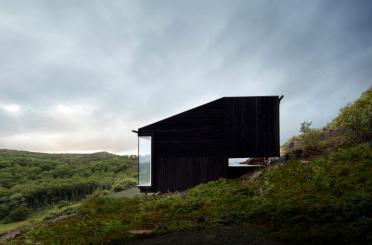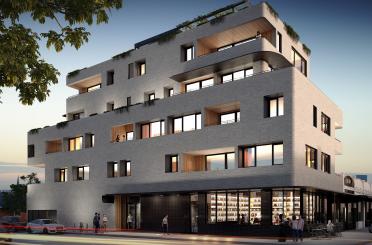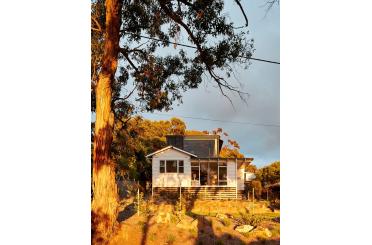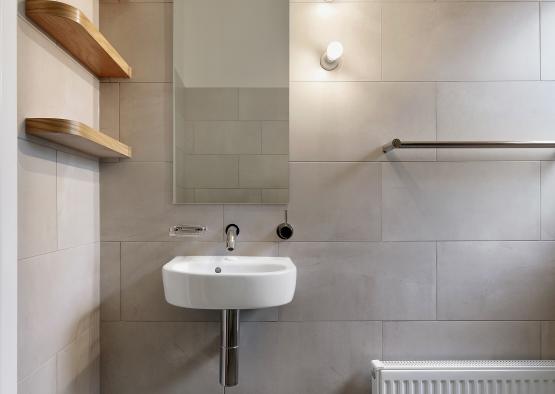
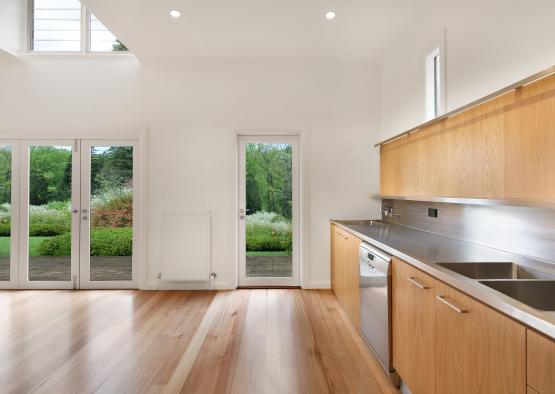
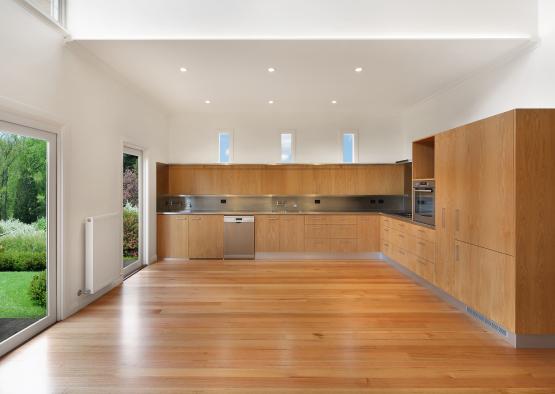
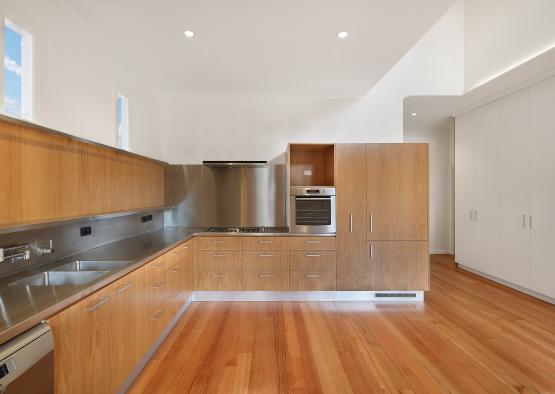
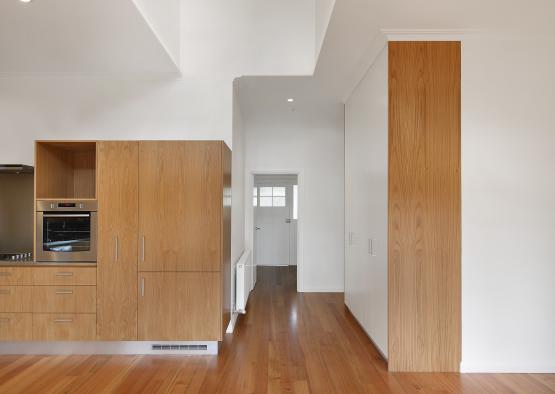
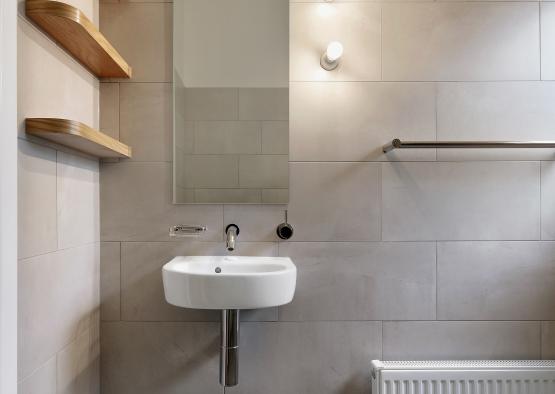
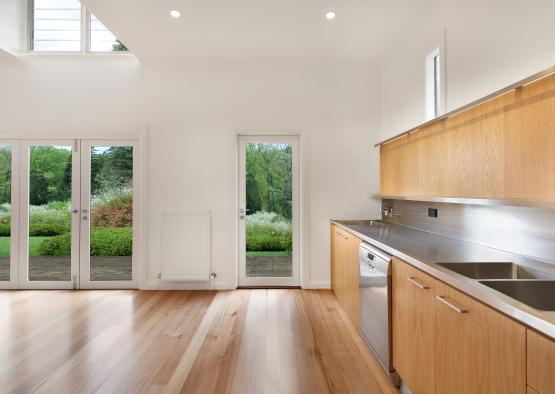
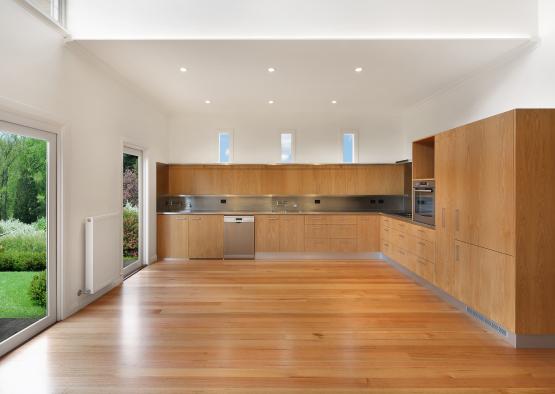
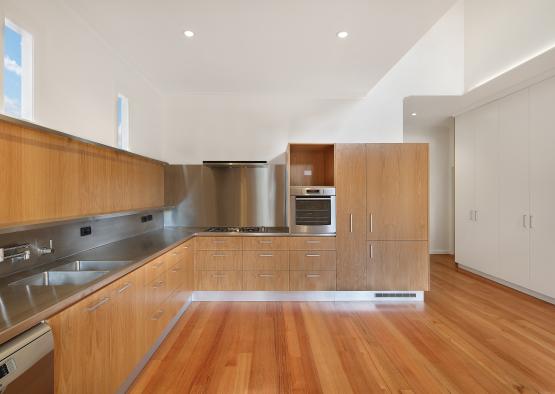
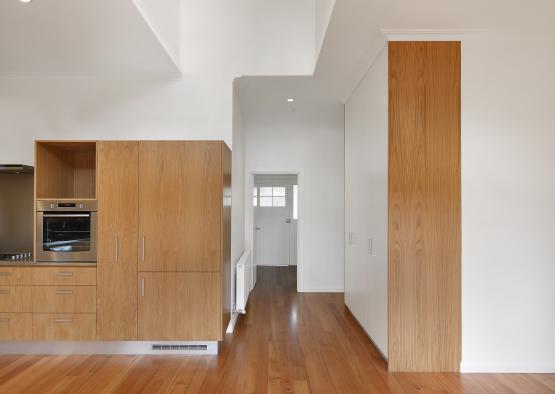
Overview
The prolific use of timber throughout the new renovation works, together with good design principles, has greatly increased the overall sustainability of the house.
Timber’s inherent properties help reduce the general carbon footprint, while at the same time increase the thermal efficiency levels in the house. The use of timber and timber veneers throughout the house provides a nice contrast to the predominantly white backdrop, as well as visual warmth and detail that more “artificial” materials (such as metal claddings and tiles) simply can’t achieve.
The natural warmth, tones and colours inherent in the American and Tasmanian Oaks used throughout the project are highly desirable and provide a warm and welcoming feel for the home owners and occupants alike.
Being a recyclable natural material, timber ensures a higher level of environmental sustainability by leaving a lower carbon footprint on the planet.
Structure
The proposed new areas were designed to take advantage northerly aspect and views to the extensive garden beyond. Approximately 2/3 of the original house was demolished and re-built at the rear. All newly renovated areas were lined with new plasterboard and fully insulated throughout; existing single glazed windows were double-glazed.
The new works respond to the surrounding landscape by having avoided the removal of a significant magnolia tree that assists in shading the house during warm summer months. This created an opportunity to cantilever out a section of new roof, to provide shelter from the elements for the deck below.
A new timber floorboard lined light well slices through the ceiling space, creating a delightful point of interest that defines the open areas below and allows heat built-up over summer, to be expelled via motorised louvres above. The new guttering is part of a charged system, to allow for rainwater to be recycled to a future 10,000 litre water tank at the rear of the property. Provision for solar panels has been made and a new solar hot water system helps to encourage the green initiative and ensures the house achieves its 6+ star rating.
Exterior
Timber doors and windows were used as opposed to aluminium, to maintain and continue with the original style of the house, as well as for their higher thermal and sustainable quality. The timber doors and windows add to the overall sustainability of the project by the very nature of the material itself. The feature light well over the Living area incorporates mechanically operable louvres, which help draw rising heat out in summer when they are opened via ‘Venturi’ effect, thus increasing the overall sustainability objectives of the house.
Interior
American Oak veneer has been used for all kitchen cabinetry, including cabinet doors and end panels, wardrobe linings, plus bathroom shelving.
The American Oak veneer’s consistent yet distinctive grain pattern and warm tone are what make it outstanding for use on cabinetry. It has just the right balance of “yellow” tone that complements the Tasmanian Oak floorboards and provides a good contrast to the predominantly all-white interiors. It all helps to create a crisp, contemporary look that works well with the “traditional-style” house too.

